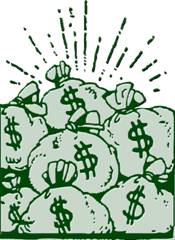
Cellular energy production and how to increase it

The body’s energy comes from outside sources
These energy sources can be natural or man-made:
- Natural Energy sources. Include the food we eat, water, sunshine, herbs/essential oils, natural sounds, other people, the air we breathe, and from God Himself – our ultimate source of energy!
- Man-made sources. Include electromedicine or other mechanisms providing energy at frequencies mimicking nature. E.g. light or sound therapy, frequency therapies. Note also, that man-made energy sources not “in tune” with nature can reduce cellular energy production.
A human generates ~100 Watts on a 2000 calorie daily diet,
about the same as a bright light bulb.
Every one of your body’s cells has a “battery” across its outer membrane. This voltage difference across the cell membrane powers movement of ingredients into and out of the cell. The voltage level of this cell “battery” can be increased or reduced by energy sources or other presences/phenomenon.
▲ Natural or man-made, nature-mimicking energy sources
▲ Positive emotions
▼ Past or present emotional trauma
▼ Non-natural, man-made energy frequencies
▼ Toxins, microbes

The primary energy "currency" of the body is in the form of an ATP molecule
ATP is used to provide energy for most of the work done by the cell, and also for the cell's own maintenance

Your body makes 2/3 of its own weight in ATP every day
(1) ATP requires some energy to be made
(2) ATP releases energy when broken down by enzymes
When you move a muscle, think, breathe, replicate your DNA, and when your heart beats, you use ATP (Adenosine triphosphate) molecules
How do cells produce ATP energy?
Cells produce ATP most efficiently utilizing OXYGEN and electrons in a process called “Cellular respiration”. This enzyme-controlled process takes place mainly in the cell’s mitochondria (200-300 of these “energy factories” in a cell), in which OXYGEN strips high-energy electrons from (“oxidizes”) organic compounds, such as glucose and fatty acids.
Interesting factoid: mitochondria have their own DNA, but it is circular, not helical like cell DNA. Similar to bacteria, they replicate their own DNA and direct their own division.
These electrons are then passed to successive steps in the Cellular Respiration Cycle to ultimately produce cellular ATP energy. Active cells, such as muscle cells require more energy and therefore contain more mitochondria.
When no glucose is available, ATP can be produced from electrons stored in fatty acids, and the liver can also convert protein amino acids to glucose.
In summary,
OXYGEN + electrons = ATP ENERGY
Cells can also produce energy without oxygen – but by much less efficient fermentation pathways.
How to increase cellular energy production
By attending to the needs of each one of our cells, we essentially take care of our whole body. Our physical being consists of approximately 100 trillion cells (nobody’s actually counted them!), connected according to a wonderfully complex and structured design.
- Obviously, our diet needs to supply the cells’ primary structural components (e.g. amino acids and minerals)
- We also need to ensure that the “power plants” (mitochondria) in our cells receive the necessary raw materials for cellular energy production – this is the key to health, to enable our cells (and especially our immune system cells) to get on with their specific jobs, and keep our body “humming”. The number of mitochondria in a cell varies with cell type (Eg. Red blood cells have none [this special case allows more space for hemoglobin, enabling cell to carry more oxygen, and also more flexibility to diffuse through capillaries], muscle cells can contain hundreds and liver cells about 1000 – 2000 mitochondria). The cumulative energy output of the mitochondria determines how well the cell can function.
Most energy-enhancing therapies address one or more of the following:
- Provide the body’s cells with OXYGEN and/or electrons
- Aid delivery of OXYGEN and electrons to the cells
- Aid waste removal from cells





















